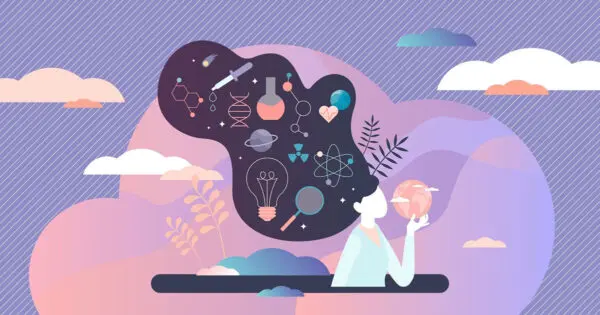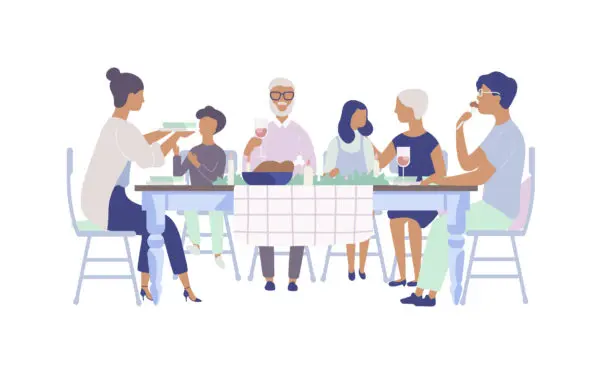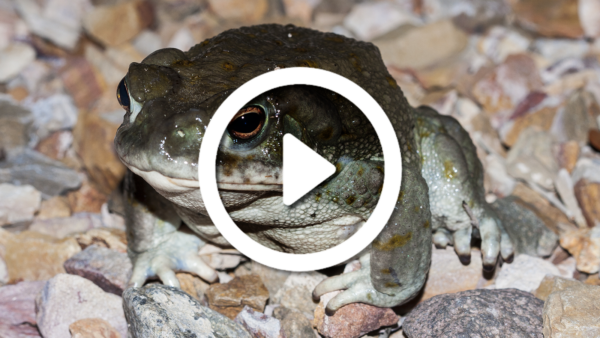Psychedelic integration is the journey after the journey. Whether a psychedelic experience was therapeutic, religious, recreational, or in any other context, integration is the process of taking the wisdom that arose in the journey and bringing it into one’s daily life.
Integrating a journey is an important aspect of psychedelic work, and it can mean the difference between a transformational life experience and some obscure memory of a really weird night. Whether a trip happened alone, with friends, in a ceremony, in a western clinical setting, or an indigenous shamanic one, processing these experiences is valuable.
What is psychedelic integration?
Psychedelic integration is a process of weaving the thread of a psychedelic experience into the tapestry of one’s life, explains Dr. Katherine MacLean. On its own, a single thread can’t go very far. When that thread is taken and woven together with all of the other threads that make up who we are, it becomes integrated, whole, solid; a colorful work of art.
In Latin, the word integrare means to form or blend into a whole, or to complete. Psychedelic integration is a chance to distill the wisdom of an experience in an altered state and bring it fully into our waking lives. This allows us to keep working with the messages, giving them space to continue unfolding over time and space. Integration of the psychedelic journey may also serve to help us become more whole with ourselves.
Psychedelics can bring up memories, thoughts, emotions, even parts of ourselves we have disowned or repressed. Painful experiences, unprocessed trauma, and grief can all arise during a trip. After we go through these difficult waves, it can be helpful to process the material and “make sense” of it, even if it means accepting it. Integration can be done in a group of peers, in an integration group guided by a trained practitioner, with a trusted friend or mentor, with the one-on-one support of a professional therapist or coach, or on one’s own.
Integration therapy, coaching, and circles
There is no one right way to integrate a psychedelic trip. The process can be different from person to person, and can even vary from journey to journey. In the words of Julie Megler,
“The best analogy I have for what integration really is, is alchemy. Each person has a unique reaction, the fires inside our cauldrons look different. What precipitates our elemental reaction is an intricate and delicate process. Sometimes it leads to explosions, sometimes it leads to lead, and when we add just the right pieces we have transformation. We can’t predict what will lead to that transformation until we are in our individual cauldrons and find the pieces that melt together as a catalyst.”
While the journey simmers in your cauldron, you may be thinking about how to approach your integration. Some people have the best results from integrating in a group setting. Others prefer the one-on-one attention and support of a trained professional; this option may be more appropriate for people with diagnosable conditions such as PTSD, OCD, depression, anxiety and more. Most importantly, you should try to find the arrangement that will best alchemize your transformation.
Psychedelic integration therapy
Some integration specialists are therapists, and some are coaches. The main difference between them is what responsibilities, training, and scope of practice each one has.
Psychedelic integration therapy involves working with a trained therapist to unpack prior psychedelic experience(s) and bring the wisdom of the experience into one’s present reality. Therapists can work with people for the short term or on an ongoing basis. They may utilize a variety of therapeutic techniques from the domain of cognitive-behavioral therapy, somatic therapy, and even modalities like eye movement desensitization and reprocessing (EMDR) to help clients fully absorb and integrate the content from the psychedelic experience. With the support of the therapeutic relationship, the client can incorporate new thought, behavioral, and central nervous system patterns.
Therapists undergo several years of training and practice before they receive licensure. Since the material that arises in a psychedelic trip can be incredibly personal, complex, and is often related to past trauma, doing integration work with a licensed therapist can facilitate the healing process. Licensed therapists may even be able to accept your insurance for therapy, which can help keep the cost lower.
Psychedelic integration coaching
Psychotherapy tends to focus on looking back to see how past experiences have impacted current behaviors. Coaching differs and meets clients where they are and focuses on the future. Coaching is a rising, and unregulated, field. A coach helps people reach specific, measurable goals with the intention of processing, even embracing what happened in a trip and integrating any lessons or takeaways into one’s daily life.
The techniques employed by a coach or a therapist in the service of integration could look very similar. However, there are some differences between the two. Coaches cannot diagnose or treat mental disorders. They can help connect their client to information, resources, accountability, support, an objective person to help with the process, and more.
Coaches work out more tangible, specific plans with their clients, whereas the integration work with a therapist may be more open-ended and explorative of the psychological side of things. Therapists also use a diagnostic process to confirm diagnosis and provide appropriate treatment intervention. Coaching models trade clinical intervention for client intuition and focus more on the client as an expert of themselves. Coaching models also remove a “hierarchy” of the expert-patient dynamic and come together as equals. Coaches use a humanistic lens and may share personal details about their life and story. Therapy models typically frown upon self disclosure, which can also impact the client-therapist relationship.
While therapists are held accountable by a licensure board, continuing education, and a code of ethics, anyone can call themselves a coach. This lower barrier to entry can be beneficial, as not everyone has the means or access to complete all of the schooling necessary to become a therapist. Indeed, someone can be an amazing support to people without going through 7+ years of school. However, it also creates a dangerous circumstance where untrained individuals help clients hold their deep traumas and pains. Many coaches go through trauma informed programs to teach them how to work effectively and ethically with people.
Consider asking a prospective coach if they are engaged in a community of practice with peer supervision and mentorship from seasoned practitioners.
If you have trauma (we all do, to varying degrees), ask if the prospective practitioner is trauma-informed, meaning they have special training and certifications in emotional trauma, trauma and the central nervous system, dissociation, panic, somatic work, and/or PTSD.
Integration Circles
Group work can be a supportive place to process insights from altered consciousness space with peers. Listening to other people’s stories and hearing how they are working through their own process can have as much value, if not more than sharing personally. In a circle, the collective wisdom of the group can emerge in a beautiful web of stories, experiences, emotions and sentiments shared.
There are many integration circles one can find online to attend. Some are facilitated by therapists, coaches, or peers. Some circles are non-hierarchical and the duties of facilitation shift from person to person. You can also learn the basics and start your own peer-led integration circle with the help of this guide.
Practical Strategies for Integrating a Psychedelic Experience
After a trip, there may be physical, emotional, mental, or even spiritual material to process. Integration is unique to each person and trip; perhaps it starts with going over notes or voice recordings from the journey, and talking about it with the sitter, therapist(s), or friend who was there. Spending time alone, spending time in nature, journaling current thoughts and feelings, creating art or writing that expresses an aspect of the journey, such as visions or felt sensations, and moving the body are great places to start.
It may be illuminating to pay attention to one’s thoughts, feelings, and urges in the days following a trip. One can try to observe and accept what is present there, rather than try to change it or react to it.
Dreams may be especially strange and potent after a psychedelic trip, so some people write down their dreams and look at what messages might be bubbling up from the unconscious mind.
Integration is a great time to examine behaviors with a compassionately critical eye and decide what to let go of, as well as any behaviors to cultivate and hone.
In the Psychedelic Medicine Integration Workbook, Kaufman and McCamy emphasize that integration is a journey, not a destination. They put forth the Ayavolve Integration Model for the process of psychedelic healing work, which includes a five step process: work with plant medicine/psychedelic → Insights and processing of ceremony experiences → Digest the healing and learning → Take actions → The self evolves.
In this way, the psychedelic experience is only one aspect of a journey toward evolution. A person will not necessarily access self-evolution unless they have taken time to process the material from the journey and taken meaningful steps to apply that wisdom to their life.
The Psychedelic Medicine Integration Workbook also suggests examining the psychedelic experience through the lens of categories, including body, mind, visions, emotions, memories, and themes. Some questions include:
- How did you feel inside your body?
- What emotions did you feel? (ex: sadness, grief, anger, fear, jealousy, joy, gratitude, frustration)
- Did any memories arise?
- What did you think about during the experience?
- Did you see any patterns about yourself and your behavior?
- Did you have any visions?
- Were there any interpersonal dynamics from the experience that should be explored? Is there anything that you feel the need to clarify with the facilitators, group members, sitter, or whoever was with you for the experience?
- Did anything else happen that feels worthy of noting?
After processing the experience, the next step may be to look forward and consider how this experience could be applied to your life. Questions to meditate on, adapted from the Workbook, include:
- What were the big realization(s) or insight(s) from the experience?
- Given what came up in the journey, what do you now feel you need to work on most in your life?
- When you reflect on your original intentions for this experience, how does the experience match with the intention?
- What can you do to integrate these lessons into your daily life?
- How might you express and articulate the unique experience you had? Could you express yourself with journaling, making art, movement, vocalizing, or any other form of expression?
- Consider how you can express aspects of your journey to other people. Is there anything specific that you want to share with someone, or anything that you don’t want to share?
Psychedelics can increase nature-relatedness. Some people find that being outside and interacting with nature supports their integration process. Research suggests that mindfulness training coupled with psychedelic integration has been effective at increasing feelings of mental health and well-being. It may be beneficial to learn about mindfulness and practice some techniques in support of an integration process.
A note about one-ness
Psychedelic experiences can catalyze states of ego-dissolution, or a feeling of being “one with everything.” Psychedelics can also make a person feel as though they are completely alone in the universe. Whether a person has had an experience on one or both ends of that spectrum, considering how to give back to the world can also be part of integration. Maya Angelou said it well, “the truth is, no one of us can be free until everybody is free.”
Conclusions
Integration is an opportunity to harness the neuroplasticity that can come after a psychedelic experience and use it to build new connections and foundations in the body and mind. It is a self directed experience and the integration method is ultimately informed by each unique individual. The process can be a lot to do one one’s own; working on integration in community, with a trusted friend, or with the help of a therapist or professional coach can help support the process to its fullest possible extent.







